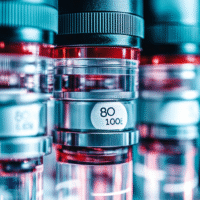Title: The Role of Long-Term Hair Steroids as Biomarkers in PTSD
Background: Dysregulation of steroid hormones is often linked to the development of posttraumatic stress disorder (PTSD). However, applying these findings in clinical settings to assess symptoms and treatment effectiveness is challenging. There is a lack of long-term data on steroid levels during treatment.
Objective: This study aimed to evaluate the potential of measuring steroid hormone levels in hair as diagnostic and treatment-related indicators in female inpatients diagnosed with PTSD.
Method: In a secondary analysis of a randomized controlled trial, 54 female inpatients with PTSD underwent standardized treatment and provided hair samples before treatment, after treatment, and three months later. Levels of cortisol, cortisone, and dehydroepiandrosterone (DHEA) were measured, along with clinical assessments.
Results: Initial findings indicated that lower levels of DHEA before treatment were associated with higher anxiety symptoms and a trend towards greater lifetime trauma exposure. Although patients showed improvement in PTSD symptoms during treatment, neither the initial steroid levels nor changes in steroid levels during treatment predicted PTSD symptoms at the end of treatment or at the three-month follow-up.
Conclusion: This study underscores the difficulties in establishing reliable biomarkers in clinical populations. The link between lower DHEA levels and anxiety symptoms suggests a need for further investigation. Our findings indicate that selecting specific patient subgroups may be essential for understanding and targeting the hormonal mechanisms involved in PTSD more effectively.
Action Steps:
1. Analyze Data: Evaluate the role of long-term hair steroid measurements as diagnostic and treatment-related indicators in patients with PTSD. Identify inefficiencies and growth opportunities based on trial findings.
2. Define Measurable Outcomes: Establish clear objectives for clinics and patients, such as improving diagnosis speed, reducing costs, and enhancing patient care.
3. Select AI Tools: Choose AI solutions that meet specific clinical needs, such as predictive analytics, automated documentation, or patient monitoring.
4. Implement Gradually: Start with a pilot project, monitor results, and expand AI solutions based on their performance and real-world impact.
For AI solutions in medical management, contact us:
Telegram: https://t.me/itinai
LinkedIn: https://www.linkedin.com/company/itinai/



























